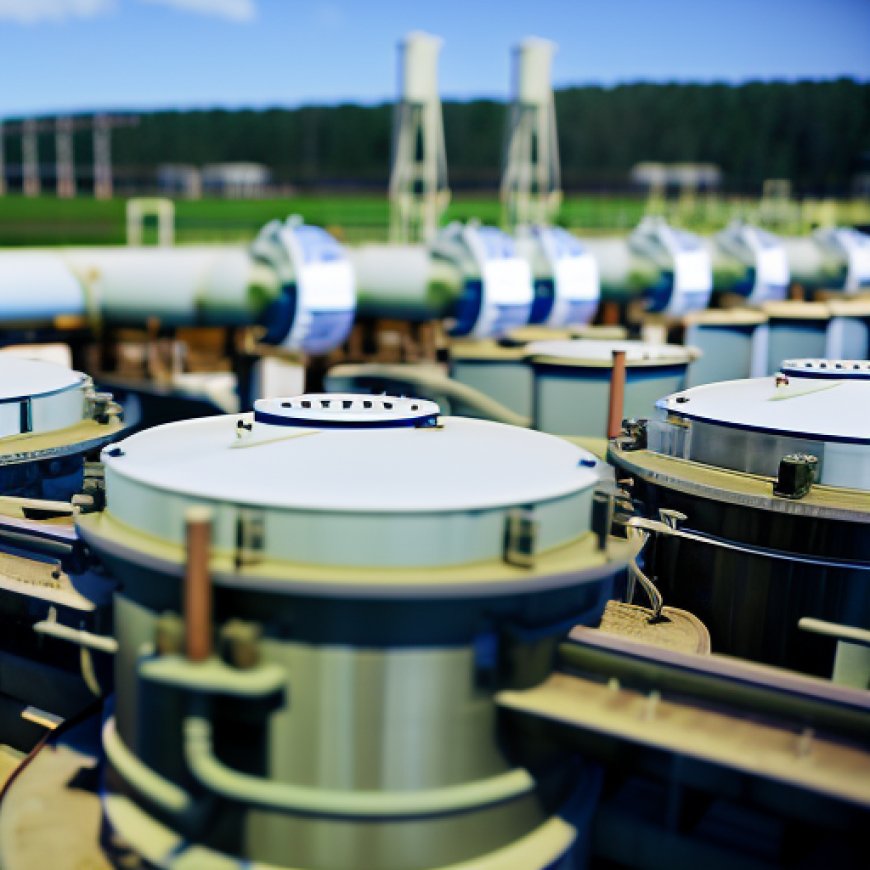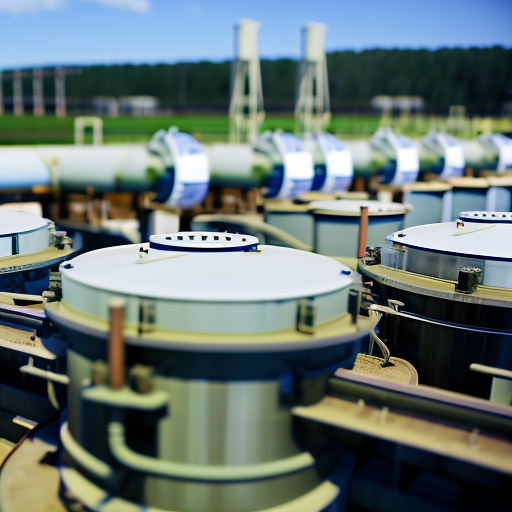KSB Pumps for Big Creek Water Georgia Reclamation Facility Expansion | impeller.net
KSB Pumps for Big Creek Water Georgia Reclamation Facility ... Impeller.net


Introduction
When aging wastewater treatment plants reach a time when they are in need of upgrading or expanding to meet increasing demands on their capabilities, opportunities arise to consider introducing new technologies to replace old equipment and build new facilities that improve operational reliability.
Background
Where a plant is several decades old, it is possible that certain mechanical elements of the original build may no longer be available, or have been superseded by new designs and technologies.
The Big Creek Water Reclamation Facility
The Big Creek Water Reclamation Facility in Fulton County, Georgia, USA now in its final stages of construction is making the most of the latest technologies on the market. Constructed in the early 1970’s, Big Creek had at that time a daily flow capacity of 2,840m³ (0.75 US mg). However, by 2015 the facility had reached 80% of its average daily flow capacity so by law its operators, Fulton County Public Works Department, had to formulate plans to upgrade and increase the capacity of Big Creek. The plans had to ensure that the project would improve operational reliability, meet existing and future drinking water and wastewater treatment demands, and comply with strict discharge levels into the nearby Chattahoochee River.
Sustainable Development Goals (SDGs)
- Goal 6: Clean Water and Sanitation
- Goal 9: Industry, Innovation and Infrastructure
- Goal 11: Sustainable Cities and Communities
- Goal 12: Responsible Consumption and Production
- Goal 14: Life Below Water
Upgrade and Expansion
The result was the implementation in 2018 of a $300 million progressive design-build upgrade incorporating advanced Membrane Biological Reactor (MBR) technology. This technology will produce significantly cleaner discharge water and contribute to increasing the current flow capacity from 91,000m³ per day (24 US mg) to 144,000m³per day (38 US mg) and be fully operational in 2024.
Pump requirements
Handling the vastly increased flow levels has inevitably involved a major review of the existing fluids handling capabilities and those associated with the Returned Activated Sludge (RAS) produced by the MBR process. This aspect of the project has involved Georgia and Alabama-based Pump & Process Equipment Inc. (P&PE), an authorised representative of KSB. P&PE has had a close working relationship with Fulton County over many years, supplying the Big Creek plant with several pump types, primarily wastewater process pumps manufactured by KSB.
Operational Efficiency
An influential aspect of the new treatment plant is that it operates by gravity. Because the wastewater entering the plant is received from external pump stations, and taking into account the significant elevation change across the site, the design of the new facility reduces the need for pumping at several parts of the plant. This even includes the flow through the membranes of the biological reactor, resulting in significant long-term operational savings as fewer pumps reduce power costs.
KSB KRT pumps
“The KSB KRT pump has been designed specifically for wastewater treatment applications where solids-laden fluids are encountered and clogging is a challenge,” explains Bill Uhrig, Vice President at P&PE. “Suitable for both dry and wet pit installations, this robust pump series provides a variety of material offerings, several types of impellers and premium efficiency motors. These cutting-edge technologies were detailed in the project tender specifications drawn up by the plant’s design engineers, Brown & Caldwell.”
RAS Pump Installation
The RAS pumps are the largest pumps at Big Creek. “Utilising duplex stainless steel, three-vane non-clog impellers, each pump has a 20-inch discharge and a 30-inch suction line feeding them,” says Nick Abbatiello, KSB’s Southeast Water Market Regional Manager. “The rated duty point is 658m³(17,385 US gpm) @ 31.3ft TDH and the pumps will run at different speeds to accommodate the initial flows, but are sized for the ultimate build-out of the facility,” says Abbatiello. “The challenge of this application has been accommodating the very high flow when there is only 32ft of head. This means that each of the pumps is brought on stream in sequence as the flow increases to handle the demands of the plant.”
Process Duty Pumps
P&PE has also provided contractor Archer Western with a range of KSB KRT pumps for specific process duties. These comprise three different types of impellers for various applications, together with three different types of motors to meet all specific requirements. The design of the K-type, E-type and D-type impellers and the pump housing ensure a free flow of solids-laden liquids and combined with high-efficiency motors, they deliver significant operating cost savings.
Conclusion
Serving one of the fastest growing regions around the Atlanta, Georgia area, the Big Creek Water Reclamation Facility upgrade and expansion, with a service area of 70 square miles, is the single largest project in Fulton County’s history. Through years of planning, collaboration, and a culmination of vision, engineering, and equipment, Fulton County businesses and residents will soon be the beneficiaries of this sweeping design-build project providing plentiful and clean water and waterways for years to come.
SDGs, Targets, and Indicators
-
SDG 6: Clean Water and Sanitation
- Target 6.3: By 2030, improve water quality by reducing pollution, eliminating dumping and minimizing release of hazardous chemicals and materials.
- Indicator 6.3.2: Proportion of bodies of water with good ambient water quality.
-
SDG 9: Industry, Innovation, and Infrastructure
- Target 9.4: By 2030, upgrade infrastructure and retrofit industries to make them sustainable, with increased resource-use efficiency and greater adoption of clean and environmentally sound technologies and industrial processes.
- Indicator 9.4.1: CO2 emission per unit of value added.
-
SDG 12: Responsible Consumption and Production
- Target 12.4: By 2020, achieve the environmentally sound management of chemicals and all wastes throughout their life cycle, in accordance with agreed international frameworks, and significantly reduce their release to air, water, and soil in order to minimize their adverse impacts on human health and the environment.
- Indicator 12.4.2: Hazardous waste generated per capita and proportion of hazardous waste treated, by type of treatment.
Table: SDGs, Targets, and Indicators
| SDGs | Targets | Indicators |
|---|---|---|
| SDG 6: Clean Water and Sanitation | Target 6.3: By 2030, improve water quality by reducing pollution, eliminating dumping and minimizing release of hazardous chemicals and materials. | Indicator 6.3.2: Proportion of bodies of water with good ambient water quality. |
| SDG 9: Industry, Innovation, and Infrastructure | Target 9.4: By 2030, upgrade infrastructure and retrofit industries to make them sustainable, with increased resource-use efficiency and greater adoption of clean and environmentally sound technologies and industrial processes. | Indicator 9.4.1: CO2 emission per unit of value added. |
| SDG 12: Responsible Consumption and Production | Target 12.4: By 2020, achieve the environmentally sound management of chemicals and all wastes throughout their life cycle, in accordance with agreed international frameworks, and significantly reduce their release to air, water, and soil in order to minimize their adverse impacts on human health and the environment. | Indicator 12.4.2: Hazardous waste generated per capita and proportion of hazardous waste treated, by type of treatment. |
Analysis
The issues highlighted in the article are related to upgrading and expanding wastewater treatment plants to meet increasing demands and improve operational reliability. The article specifically discusses the Big Creek Water Reclamation Facility in Fulton County, Georgia, USA, which is undergoing a $300 million upgrade using advanced Membrane Biological Reactor (MBR) technology.
1. Which SDGs are addressed or connected to the issues highlighted in the article?
The issues highlighted in the article are connected to the following SDGs:
- SDG 6: Clean Water and Sanitation
- SDG 9: Industry, Innovation, and Infrastructure
- SDG 12: Responsible Consumption and Production
2. What specific targets under those SDGs can be identified based on the article’s content?
Based on the article’s content, the following specific targets can be identified:
- Target 6.3: By 2030, improve water quality by reducing pollution, eliminating dumping and minimizing release of hazardous chemicals and materials.
- Target 9.4: By 2030, upgrade infrastructure and retrofit industries to make them sustainable, with increased resource-use efficiency and greater adoption of clean and environmentally sound technologies and industrial processes.
- Target 12.4: By 2020, achieve the environmentally sound management of chemicals and all wastes throughout their life cycle, in accordance with agreed international frameworks, and significantly reduce their release to air, water, and soil in order to minimize their adverse impacts on human health and the environment.
3. Are there any indicators mentioned or implied in the article that can be used to measure progress towards the identified targets?
The article mentions or implies the following indicators that can be used to measure progress towards the identified targets:
- Indicator 6.3.2: Proportion of bodies of water with good ambient water quality.
- Indicator 9.4.1: CO2 emission per unit of value added.
- Indicator 12.4.2: Hazardous waste generated per capita and proportion of hazardous waste treated, by type of treatment.
The article discusses the upgrade of the Big Creek Water Reclamation Facility to improve water quality and reduce pollution, which aligns with Indicator 6.3.2. The use of advanced technologies in the upgrade, such as Membrane Biological Reactor (MBR) technology, aims to increase resource-use efficiency and adopt clean and environmentally sound technologies, which relates to Indicator 9.4.1. Additionally, the article mentions the environmentally sound management of chemicals and wastes, indicating progress towards Indicator 12.4.2.
Behold! This splendid article springs forth from the wellspring of knowledge, shaped by a wondrous proprietary AI technology that delved into a vast ocean of data, illuminating the path towards the Sustainable Development Goals. Remember that all rights are reserved by SDG Investors LLC, empowering us to champion progress together.
Source: impeller.net

Join us, as fellow seekers of change, on a transformative journey at https://sdgtalks.ai/welcome, where you can become a member and actively contribute to shaping a brighter future.







